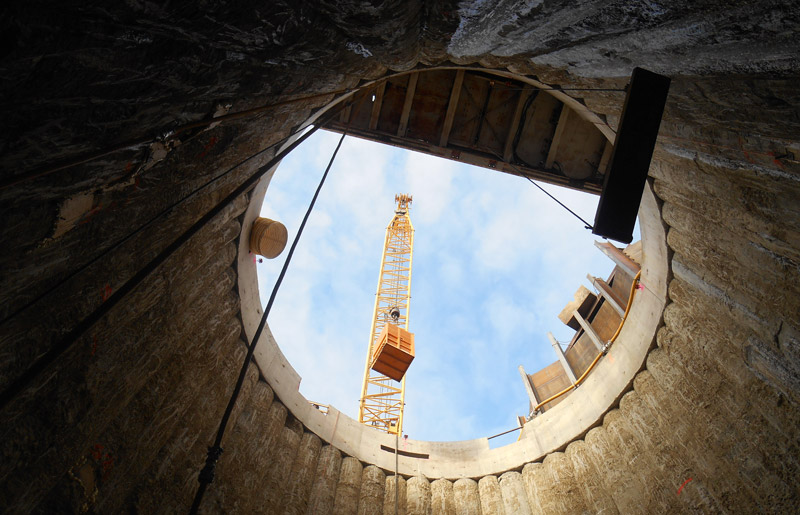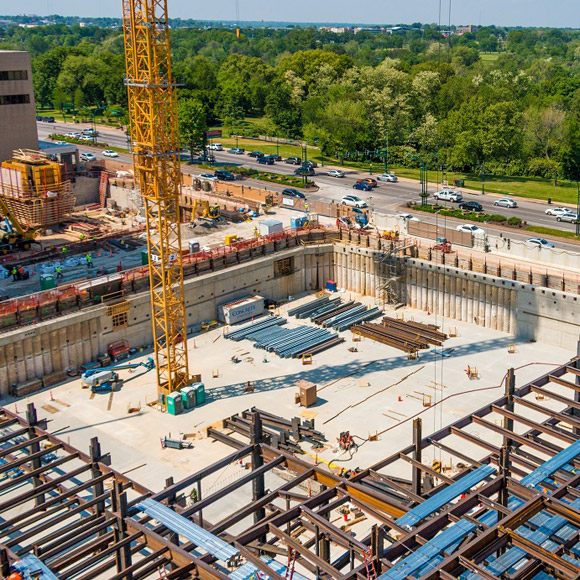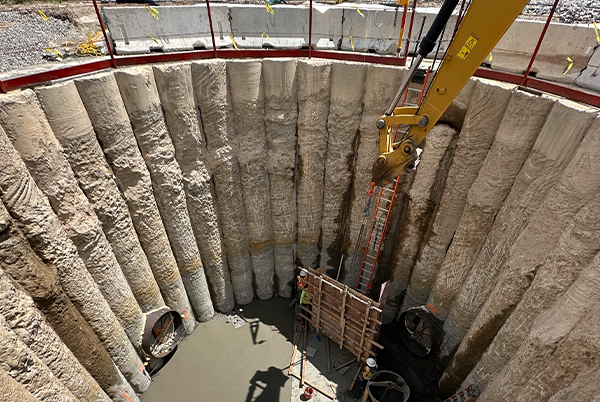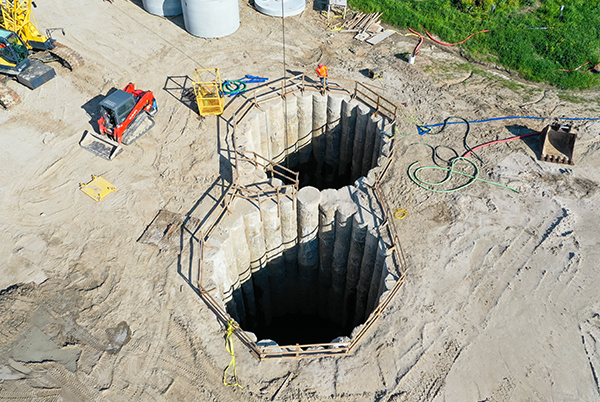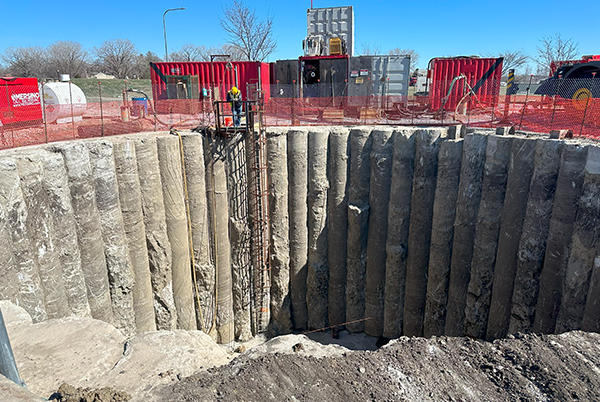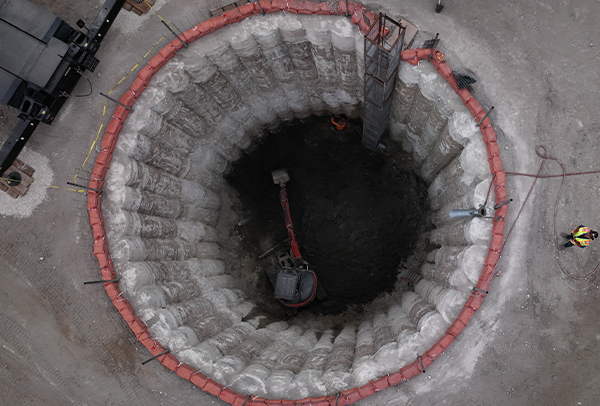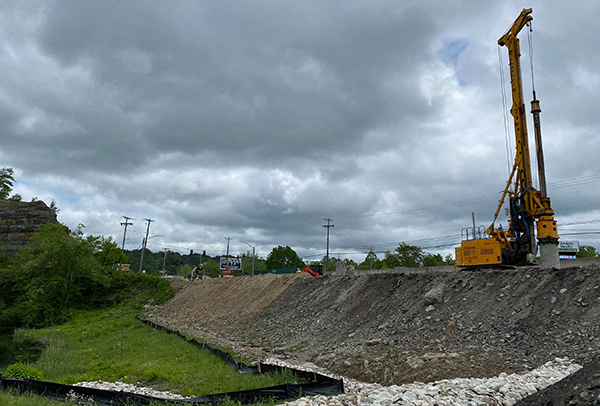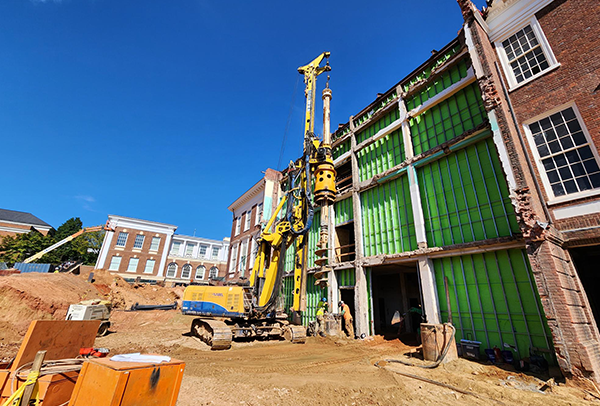Secant Wall Construction
Schnabel, a design-build company with operations across the nation, is recognized for its construction of dependable and structurally sound secant pile walls. These walls play a dual role, serving as both excavation supports and groundwater barriers.
Secant wall construction involves the use of incredibly rigid, overlapping shafts to create a continuous concrete wall. Specialized drills are utilized to drill the secant pile shafts, ensuring critical alignment necessary for the effectiveness of the wall. The diameters of these shafts typically range from 2 to 4 feet. Meanwhile, tangent piles, resembling secant piles, differ in that their shafts merely touch without any overlap.
Schnabel’s several decades worth of experience in crafting custom earth- and water-retention solutions empowers them to deliver secant walls designed to help you conquer your toughest construction challenges.
SECANT WALL Construction SOLUTIONS
Secant walls constitute a sturdy, resilient system that blends earth retention and groundwater barrier walls. The secant pile wall construction process involves drilling an alternating series of primary and secondary overlapping shafts to establish a continuous wall. The concrete in the shafts could be entirely low-strength, wholly high-strength, or a blend of primary low-strength and secondary high-strength. Typically, steel piles or reinforcing steel are situated in secondary shafts. Unreinforced high-strength shafts can also be formed into a self-supporting circular ring, commonly utilized for access to tunnels.
Due to their relative impermeability, secant pile walls can be leveraged to manage the seepage of groundwater into an excavation and curb the draining outside the excavation. The significant stiffness of secant walls makes them an ideal choice when sensitive structures are present behind the wall.
One of the benefits of employing secant piles for cutoff wall construction lies in Schnabel’s high torque drill rigs’ ability to navigate through hard-drilling conditions while simultaneously casing the drill hole. These drills can manage to make a cased hole advance even in the presence of both man-made and natural impediments including cobbles, boulders, and reinforced concrete.
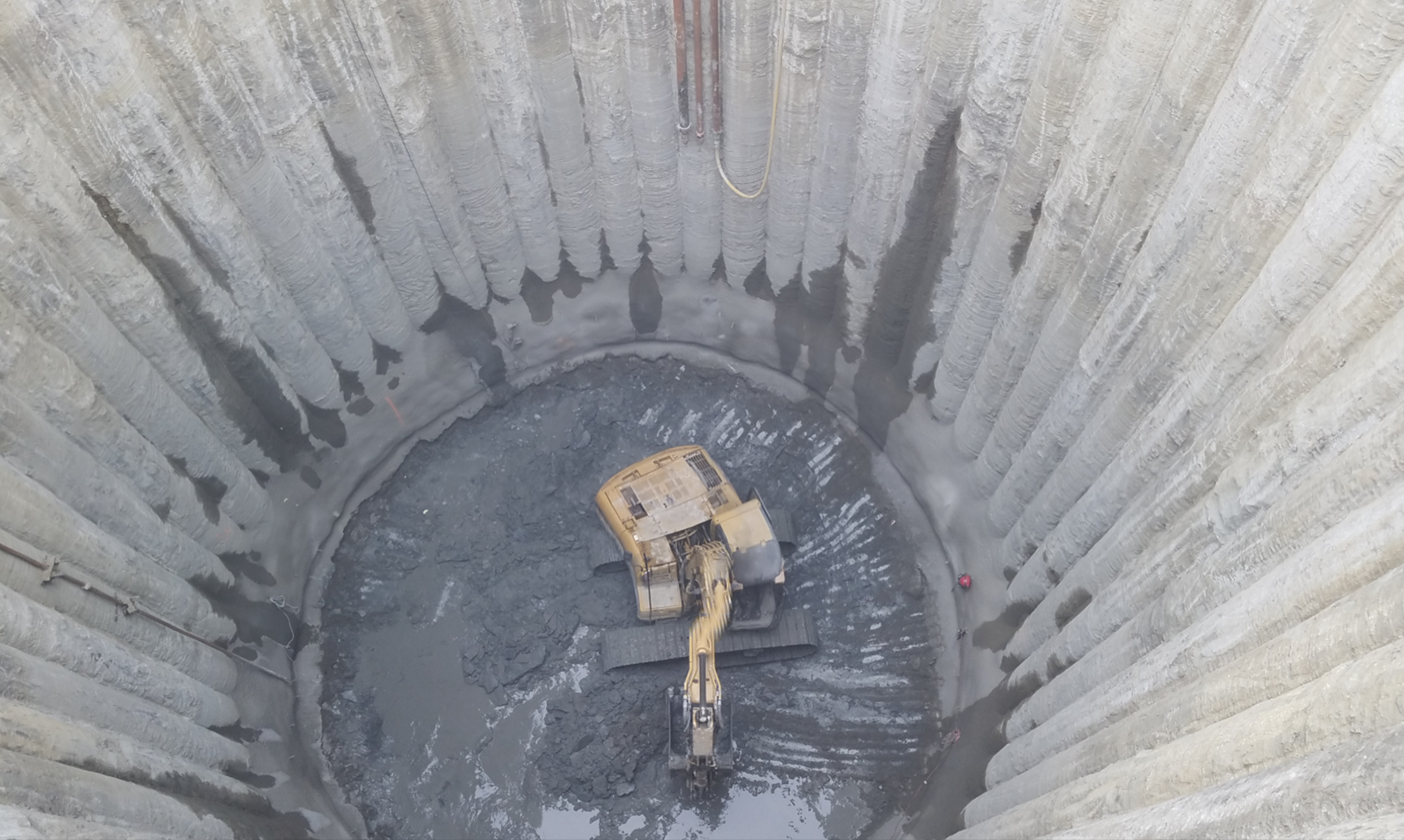
In cases where demanding drilling conditions are expected, secant piles prove to be a cost-effective approach to build cutoff walls. An additional benefit is their comparably lower mobilization expenses relative to other types of cutoff walls like slurry or soil mix walls. If you’re pondering whether a secant wall is the most suitable solution for your project, get in touch with any of Schnabel’s eight regional offices today for further guidance.
Always innovating new approaches to better solve old problems.
Barnes-Jewish Hospital
Schnabel designed and constructed a secant pile wall for the Barnes-Jewish Hospital Parkview Tower on the Washington University Medical Campus in St. Louis, Missouri. The perimeter secant wall served as both the permanent structural basement wall and the temporary earth-retention system for the new hospital building.
In 31 years of building deep foundation projects for Schnabel, building a 90’ deep reinforced circular shaft was one that was very challenging and deeply rewarding. Looking forward to working on the next one with our client Schiavone.
